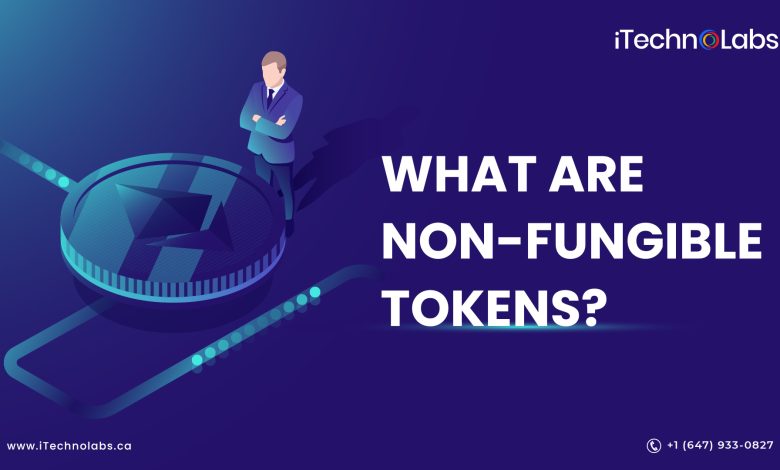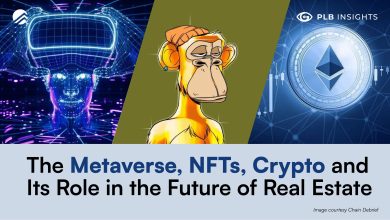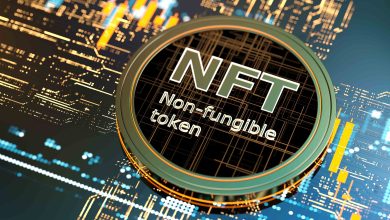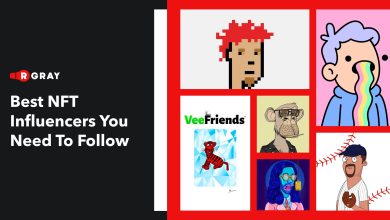Introduction to Non-Fungible Tokens (NFTs)

- Understanding the concept of Non-Fungible Tokens (NFTs)
- Exploring the unique characteristics of NFTs
- The rise of NFTs in the digital art world
- How NFTs are revolutionizing the way we buy and sell digital assets
- Challenges and controversies surrounding NFTs
- The future of NFTs: potential applications and implications
Understanding the concept of Non-Fungible Tokens (NFTs)
Non-Fungible Tokens (NFTs) are unique digital assets that represent ownership of a specific item or piece of content. Unlike cryptocurrencies such as Bitcoin or Ethereum, which are interchangeable and have the same value, NFTs are one-of-a-kind and cannot be exchanged on a like-for-like basis.
NFTs are built using blockchain technology, which ensures that each token is verifiable, secure, and cannot be replicated. This makes them ideal for proving ownership of digital art, collectibles, virtual real estate, and other unique items in the digital realm.
One of the key features of NFTs is their indivisibility, meaning that they cannot be divided into smaller units like cryptocurrencies can. This makes each NFT a distinct and irreplaceable asset, adding to its value and appeal to collectors and investors.
The concept of NFTs has gained significant attention in recent years, with high-profile sales of digital art pieces fetching millions of dollars. This has led to a surge in interest from artists, musicians, and creators looking to monetize their work through the sale of NFTs.
Overall, NFTs represent a new and exciting frontier in the world of digital ownership, offering a unique way for individuals to buy, sell, and trade digital assets in a secure and transparent manner. As the technology continues to evolve, the possibilities for NFTs are endless, making them a fascinating and potentially lucrative investment opportunity for those willing to explore this emerging market.
Exploring the unique characteristics of NFTs
Non-Fungible Tokens (NFTs) have gained significant popularity in recent years due to their unique characteristics that set them apart from traditional cryptocurrencies. One of the key features of NFTs is their indivisibility, meaning that each token is one-of-a-kind and cannot be exchanged on a like-for-like basis with another token. This uniqueness is what makes NFTs valuable to collectors and investors alike.
Another defining characteristic of NFTs is their immutability, which means that once a token is created and recorded on the blockchain, it cannot be altered or tampered with. This gives NFT owners a sense of security and authenticity, knowing that their digital assets are protected from fraud or duplication.
Furthermore, NFTs are interoperable, allowing them to be bought, sold, and traded across different platforms and marketplaces. This flexibility gives creators and collectors the freedom to engage with a diverse range of audiences and expand the reach of their digital assets.
The rise of NFTs in the digital art world
The rise of NFTs in the digital art world has been nothing short of revolutionary. Non-Fungible Tokens have opened up a whole new realm of possibilities for artists, allowing them to tokenize their work and sell it as unique digital assets. This has completely transformed the way art is bought and sold, with NFTs providing a level of authenticity and scarcity that was previously impossible to achieve in the digital space.
One of the key reasons for the popularity of NFTs in the art world is their ability to provide proof of ownership and provenance. Each NFT is stored on a blockchain, which acts as a digital ledger that records every transaction associated with the token. This means that buyers can be confident in the authenticity of the artwork they are purchasing, as well as the fact that it is a one-of-a-kind piece.
Furthermore, NFTs have also created new opportunities for artists to monetize their work. By selling their art as NFTs, artists can receive royalties every time their work is sold or resold, providing them with a continuous stream of income. This has the potential to completely change the way artists make a living, allowing them to bypass traditional galleries and art dealers and sell directly to their audience.
How NFTs are revolutionizing the way we buy and sell digital assets
NFTs are transforming the way we purchase and trade digital assets, offering a unique and secure method for ownership. Unlike traditional cryptocurrencies, NFTs are indivisible and cannot be exchanged on a like-for-like basis. This means that each NFT is distinct and cannot be replicated, making it a valuable and one-of-a-kind digital asset.
Through the use of blockchain technology, NFTs provide a transparent and decentralized platform for buying and selling digital goods. This innovation has opened up new opportunities for creators and collectors alike, allowing them to monetize and showcase their work in a way that was previously impossible.
One of the key advantages of NFTs is their ability to verify ownership and provenance, eliminating the risk of counterfeit or unauthorized duplication. This has revolutionized the art world, where authenticity and provenance are crucial factors in determining the value of a piece.
Overall, NFTs are revolutionizing the digital asset market by providing a secure, transparent, and unique way to buy and sell digital goods. As this technology continues to evolve, we can expect to see even more innovative use cases emerge, further solidifying NFTs as a game-changer in the world of digital ownership.
Challenges and controversies surrounding NFTs
There are several challenges and controversies surrounding Non-Fungible Tokens (NFTs) that have sparked debates within the digital art and collectibles community. One of the main concerns is the environmental impact of NFTs, particularly due to the energy-intensive process of minting and trading these tokens on blockchain networks. Critics argue that the carbon footprint of NFTs is significant and unsustainable, leading to discussions on how to make the technology more eco-friendly.
Another issue is the potential for copyright infringement and intellectual property theft within the NFT space. Since NFTs are based on blockchain technology, it can be difficult to trace the original creators of digital assets, leading to instances where artists’ work is tokenized and sold without their consent. This has raised questions about the need for stronger regulations and protections for creators in the NFT market.
Furthermore, the volatility and speculative nature of the NFT market have also raised concerns among investors and collectors. The prices of NFTs can fluctuate dramatically, leading to questions about the long-term value and sustainability of these digital assets. Some critics argue that the NFT market is a bubble waiting to burst, while others believe that it represents a new and innovative way to buy and sell digital art and collectibles.
The future of NFTs: potential applications and implications
The future of NFTs holds immense potential for various applications across industries, with far-reaching implications for the digital economy. As the technology continues to evolve, we can expect to see NFTs being used in areas such as art, music, gaming, real estate, and even identity verification.
One of the key advantages of NFTs is their ability to provide proof of ownership and authenticity for digital assets. This has significant implications for artists and creators, who can now tokenize their work and sell it as unique digital assets. This opens up new revenue streams and opportunities for monetization in the digital space.
In the music industry, NFTs can revolutionize the way artists distribute and monetize their music. By tokenizing albums or individual songs, artists can create limited edition collectibles for fans, offering exclusive perks such as access to live shows or merchandise. This not only enhances fan engagement but also provides a new revenue stream for artists.
In the gaming industry, NFTs can be used to create unique in-game items, characters, and skins that players can buy, sell, and trade. This introduces a new level of ownership and scarcity to virtual goods, allowing players to truly own their digital assets. It also opens up possibilities for cross-platform trading and interoperability between different games.
In the real estate sector, NFTs can streamline the process of buying, selling, and renting properties by digitizing ownership records and property titles. This can reduce paperwork, eliminate fraud, and make transactions more transparent and secure. NFTs can also enable fractional ownership of real estate, allowing investors to buy and trade shares of properties.
Overall, the future of NFTs is bright, with endless possibilities for innovation and disruption across various industries. As the technology matures and becomes more widely adopted, we can expect to see a new era of digital ownership and value creation unfold before our eyes.





